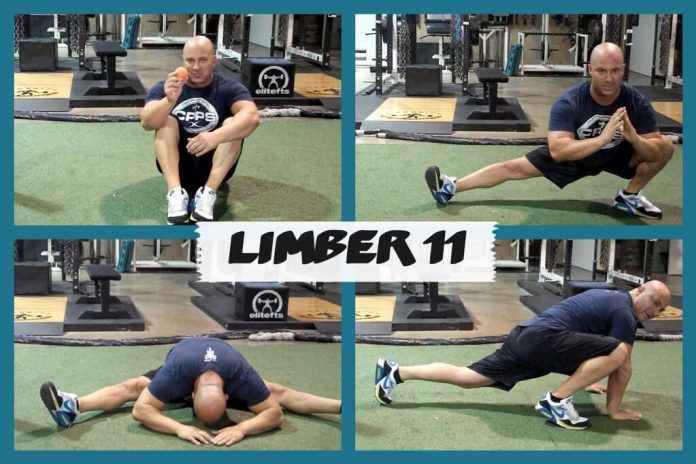
Getting the best out of your body for Brazilian Jiu-Jitsu requires maintenance. The trouble with maintenance is that it is time-consuming and not really fun. Tell me one recovery method that you’ve stuck with for longer than a month without getting bored? Unless you’re injured, you most likely give up on most things you try as BJJ recovery tools. You’re not short of options, nor the information on how to do it nowadays, that’s for sure. So, apart from all that recovery thing is really boring and long, there’s not a legitimate reason for you skipping it over. What if I told you that there’s a routine out there that’ll take no more than 20 minutes for you to finish? it is proven to work, anyone can do it, there’s no learning curve of the moves, and it takes basic equipment that you already have at your disposal. Plus, it is the product of one of the best strength coaches to ever walk the Earth. There’s an incentive for you if there ever was one!
BJJ recovery should be mandatory thing in any academy. When you put your body on the line, as you do in BJJ, there’s no way around it. This is particularly true for those over the age of 30, and definitely for all 40+ grapplers. Without exceptions! However, picking up good recovery options and a solid BJJ recovery routine should be done by grapplers at the earliest age possible. This is why some schools have a “mandatory” cool down at the end of class. The trouble is, most people slack through it, and it is usually just a couple of minutes long. Plus, all the exercises are not chosen as carefully as they should be.
What is basically your best bet for BJJ recovery is staying after training, and dedicating 20 minutes to your well-being. Be the last in the shower, and focus on allowing your body to heal from the abuse. Furthermore, adopt the Limber 11 routine as an off-the-mat practice. Do it after strength and conditioning sessions, or even on its own. It is going to do wonders for you, that I can guarantee. The only slight drawback of this routine is its equipment requirements, but they’re as minor as possible. On the positive side, just a few pieces of everyday equipment can bring you pain-free rolling and extend your BJ Jcareer for years!
Coach Joe DeFranco
If you’ve never heard of coach DeFranco you can be forgiven, if you’re a pure grappler only. But if you’ve ever been into weightlifting, at least into the right stuff, there’s no way his name didn’t pop up at some point.
The East Rutherford, NJ-based strength and conditioning legend is today the owner of “DeFranco’s gym”. It is a base where elite athletes of all sports train. These include standout UFC fighters, Olympic athletes as well as All American Wrestlers. The renowned coach knows how to get the best out of his clients. he makes them strong, powerful, well-conditioned, and healthy at the same time. This is not something many strength coaches can boast about.
DeFranco is the guy to go to for mobility and flexibility, even for those stiff bodybuilder types. Imagine what his routine can do for you, the flexible and agile grappler. DeFranco has helped a host of people become more mobile and recover faster in less time than all of the other fitness experts combined. So, give 40 minute Yoga sessions a rest and focus your BJJ recovery on Joe’s methods.
The Limber 11 Routine
First things first. The reason this routine is called “Limber 11” is the number of exercises and the result they give. As the name suggests, you need to go through 11 exercises in a prescribed order. Once you do that, and you keep doing it for a while, you’re going to become more limber than you ever thought you could!
It is also important to note that this routine is primarily a lower-body one. which means that your upper body doesn’t get much work. it is ok, though, as the most important parts of your body for grappling are going to get all they need. Plus, DeFranco has an upper-body routine to complement the Limber 11, but there’ll be time for that further on.
For now, the basics of the limber 11 routines are as follows. For unbelievable BJJ recovery and increased mobility, you’ll need to go through all the exercises once. The programming is really easy – 10-15 reps on all repetitive moves and 20-30 second hold on all static ones. Nothing to it.
Equipment-wise you’ll need a foam roller and a Lacrosse ball. Yeah, that’s it. You most likely already have them in your academy. If not, procuring them for your home is easy and cheap as well. Finally, you’re going to need just enough space to lie down. Obviously, this is not going to be an issue in the gym. at home, there’s hardly anyone who doesn’t have enough space to go lie down, so no excuses there too!
#1 IT Band Foam Roll (Each Side)
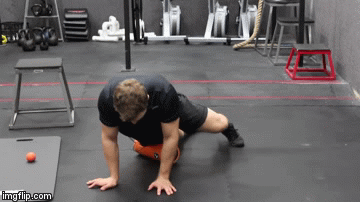
For this exercise, you need to get the outer side of your thigh on the foam roller. Start at the hip and slowly go up and down across the foam roller. The prescription is 10-15 per side. When you go up and down the foam roller remember to do short and focused movements instead of long strokes. Once you find a painful spot, remain there for a while until the pain resolves. Then move on further.
#2 Adductor Foam Roll (Each Side)
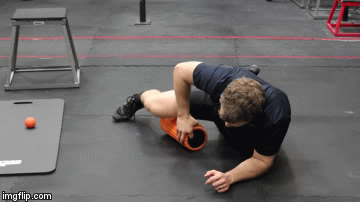
The reason this exercise is great for BJJ recovery is the fact that nobody trains the adductors much. Due to that, they tend to tire out and get inflamed very easily. The rolling allows you to stop any soft tissue trouble before it even takes hold.
#3 Glute Lacross Ball SMR

SMR stands for Self Myofascial Release, which means you’re digging deep yourself, instead of a chiropractor. The best tool to use here is a Lacross ball. Simply place it underneath your glutes and sit down. Keep the knee of the side you’re working lifted up, and the other on the ground. This will allow you to control how much weight you place on the ball .o over the whole area of the glutes, bit by bit. Spend two minutes per side doing this.
#4 Iron Cross
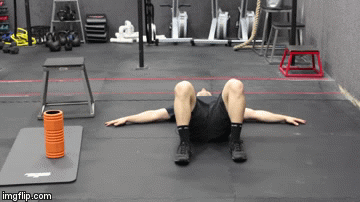
#5 Roll Over V-Sits

#6 Rocking Frogs

To perform the exercise, go on your knees and shins and spread your legs as wide as possible. The goal is to have the insides of your knees on the floor. From there, use your upper body to push back into the stretch, until you feel you can’t go further Release the stretch and go right back in it, trying to get even deeper. 10 reps of this are more than enough.
#7 Fyre Hydrants (Each Side)

#8 Mountain Climbers
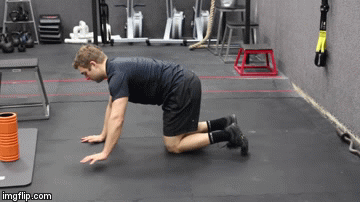
#9 Cossack Lunges
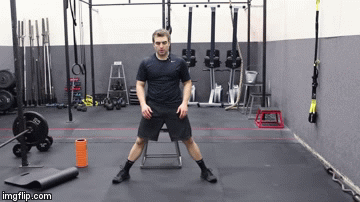
#10 Seated Piriformis Stretch
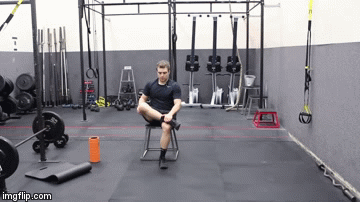
#11 Rear Foot Elevated Hip Stretch

You’re done with the Limbe 11. It only took about 20 minutes, and you get to go home happy and loose.











































